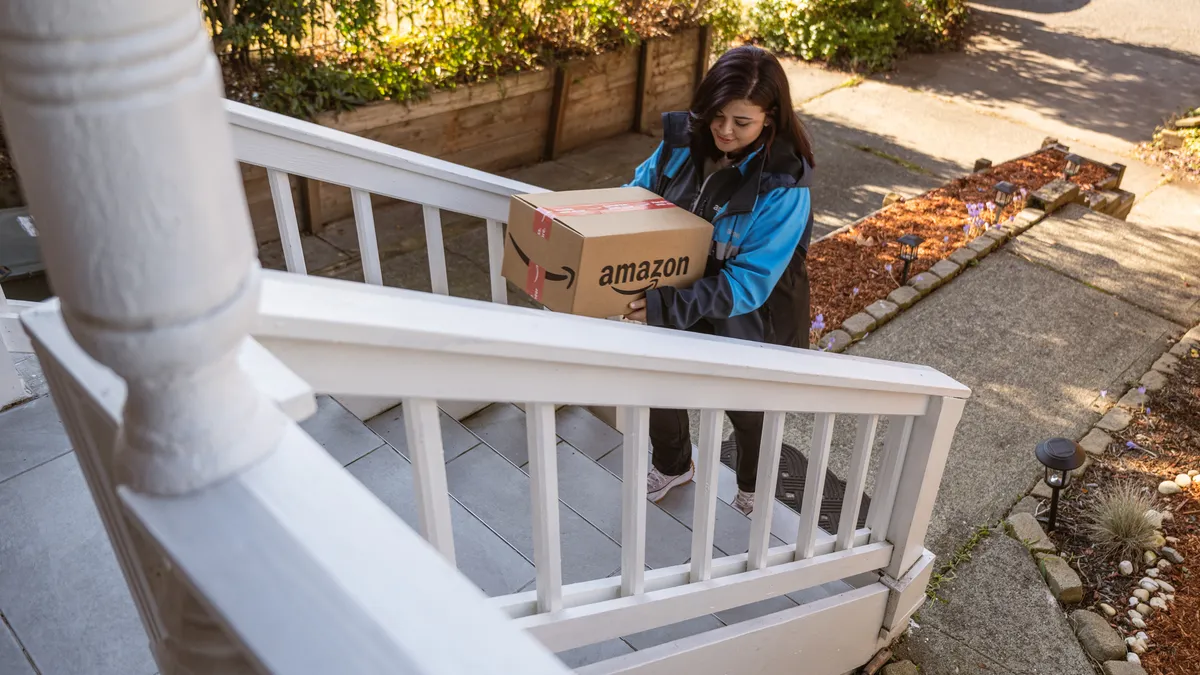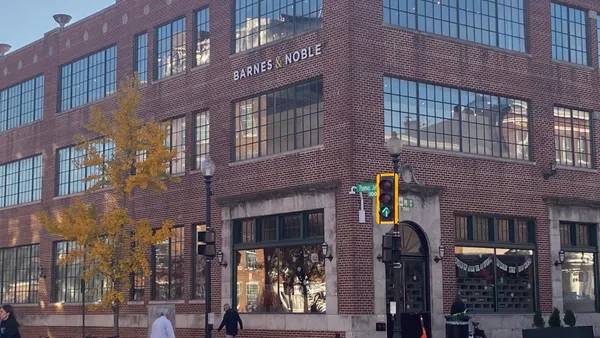Dive Brief:
-
Amazon’s online store sales were flat year over year in Q1, reaching $51.1 billion, as physical store sales rose 7% to $4.9 billion. Product sales edged up less than 1% to $57 billion, per a company press release. Third-party marketplace sellers sold 59% of goods, up from 55% a year ago, Chief Financial Officer Brian Olsavsky told analysts.
-
Growth in services was stronger. Marketplace seller services rose 18% to $29.8 billion, subscriptions grew 15% to $9.7 billion and advertising grew 21% to $9.6 billion. The company’s AWS cloud services sales rose 16% to $21.4 billion. Total company net sales rose 9% to $127.4 billion.
- Expenses also rose, with cost of sales up 13% and fulfillment costs up 21%. The e-commerce giant swung into the black, with net income of $3.2 billion, (including AWS) versus last year’s $3.8 billon net loss. This year's net income included a pre-tax loss of $0.5 billion from its investment in electric vehicle company Rivian Automotive; similarly the Q1 2021 net loss was driven in part by a pre-tax loss of $7.6 billion from that investment.
Dive Insight:
Amazon’s cost-cutting efforts — including massive layoffs that began at the end of last year and continued throughout the first quarter — are helping boost profits. But the e-commerce giant remains vulnerable to the consumer climate affecting all of retail, just as its highly profitable cloud services unit also slows.
“We saw moderated spending on discretionary categories as well as shifts to lower-priced items and healthy demand in everyday essentials, such as consumables and beauty,” Olsavsky said on a call with analysts Thursday.
Operating income at AWS, while it declined 21% to $5.1 billion in Q1, continues to prop up its retail operations: Overall operating income rose 30.1% to $4.8 billion.
Sales at the company’s online store have slowed a bit, though it still overshadows its much smaller physical fleet of mostly Whole Foods grocery stores. That has led Amazon to rely more on its services for growth, according to GlobalData Managing Director Neil Saunders.
The worry is that, as the economy tightens still further, spending in this area could come under more pressure,” he said in emailed comments.
That includes advertising, which some analysts warn could be disrupting customer trust. On the call, CEO Andy Jassy said there is “a lot of upside still in advertising,” for a few reasons.
“First, even in difficult economies, most people still shop,” he said. “And with the largest e-commerce shopping venue, we have a lot of customers that companies seek to reach. That, coupled with our very substantial investment in machine learning to make sure customers see relevant ads when they’re looking for various items, have meant that these advertisements have performed unusually well for brands, which makes them want to advertise on Amazon.”
But the company, which GlobalData research shows has held on to most of its pandemic-related gains in market share, has more to do in the current climate, Saunders said.
“In a slower growth environment, eking out market share gains requires much deeper thinking about how to better serve customers. Fortunately, we believe there are plenty of levers Amazon can pull across both the online experience and in its physical food stores,” he said. “Some of this has already been done in terms of expanding the offer in high-growth areas like beauty and focusing more on value from its own-brand products. However, other actions such making the website easier to shop and adding more inspiration to Whole Foods need to be addressed in the year ahead.”













